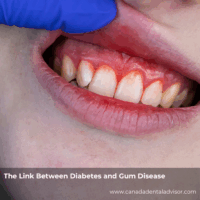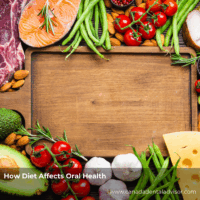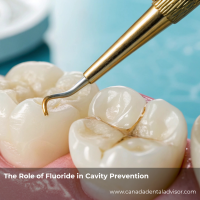Why Individualized Dental Care Matters
Just like no two smiles are the same, no two dental care routines should be either. Individualized care plans consider:
-
Age and stage of development
-
Health history and dental risk factors
-
Lifestyle and diet
-
Existing oral health conditions
For example, children need fluoride treatments and sealants, while adults may need periodontal care or whitening treatments. Seniors like Grandpa Joe might deal with dry mouth or wear dentures, requiring a totally different care approach.
Benefits of Individualized Family Dental Care
1. Improved Treatment Outcomes
Tailored routines target specific issues, catching problems early and preventing bigger ones down the road. A custom approach:
-
Addresses early signs of decay or gum disease
-
Allows for preventive treatments suited to risk levels
-
Enhances recovery post-procedures
The Johnsons found that when teenage Lily got her braces, her care plan adjusted to include interdental brushes and more frequent cleanings. The result? No post-braces cavities.
2. Enhanced Patient Compliance
When dental routines fit into each person’s lifestyle, they’re easier to follow. Personalized plans can:
-
Match routines to school, work, and activity schedules
-
Include preferred oral hygiene products
-
Offer reminders and motivation tools
Seven-year-old Timmy loved his dinosaur-themed flossers. That small change? He started flossing daily. Personalized care makes dental hygiene feel less like a chore and more like a habit.
3. Fosters Lifelong Oral Health
When families embrace dental care as a shared, tailored experience, the habits last. Individualized care encourages:
-
Early dental education
-
Positive dental attitudes
-
Consistent dentist visits
The Johnsons began seeing their dentist together every six months. Their dentist adjusted each visit to suit their individual needs, from fluoride for the kids to oral cancer screenings for the adults.
Building Your Family’s Dental Routine: Step by Step
Step 1: Schedule a Family Dental Checkup
Start by visiting a family dentist who offers comprehensive evaluations. Share each family member’s:
-
Medical and dental history
-
Concerns or symptoms
-
Lifestyle and dietary habits
Step 2: Create Customized Care Plans
With your dentist, build a care plan for each family member. This might include:
-
Daily brushing and flossing techniques
-
Recommended products (toothpaste, mouthwash, tools)
-
Nutritional guidance
-
Follow-up appointments
Step 3: Establish Routines and Reminders
Use visual charts for younger kids, phone reminders for teens, and smart tech (like electric toothbrush timers) for adults.
Step 4: Reassess and Adjust
Oral health changes over time. Revisit your routines every 6–12 months or when life changes (like braces, pregnancy, or aging) occur.
Quick Tips for Every Age Group
| Age Group | Key Needs | Recommended Care |
|---|---|---|
| Toddlers | Teething, early brushing habits | Soft brushes, fluoride toothpaste (pea-sized) |
| Kids (6-12) | Cavity prevention, sealants | Supervised brushing, flossing, sealants |
| Teens | Orthodontics, independence | Braces care, lifestyle counseling |
| Adults | Maintenance, whitening, stress impact | Night guards, periodontal care |
| Seniors | Dentures, dry mouth, gum health | Regular checks, specialty products |
Conclusion: A Family Tradition Worth Smiling About
Family dental care isn’t one-size-fits-all. By embracing individualized care plans, you’re not just improving oral health—you’re creating a legacy of healthy smiles. Just like the Johnsons, your family can thrive with a routine that fits everyone like a glove.
Ready to start your family’s dental journey? Book a checkup today and build a plan that lasts a lifetime.
Frequently Asked Questions (FAQ)
1. How often should my family visit the dentist?
Every six months is standard, but those with higher risk may need more frequent visits.
2. What if my child refuses to brush?
Make it fun with themed brushes, music timers, or reward charts. Consistency is key.
3. Are individualized plans more expensive?
Not necessarily. They can actually save money by preventing costly issues early on.
4. Can we all use the same toothpaste?
It’s better to match toothpaste to needs—kids need less fluoride, adults may need anti-sensitivity or whitening formulas.
5. What products are best for seniors?
Look for products that ease dry mouth and clean dentures effectively, plus gentle toothbrushes.
6. Do teenagers really need special care?
Yes! Hormones, braces, and busy schedules make teens especially vulnerable to gum issues and cavities.
7. How do we stick to our routines?
Set family goals, celebrate milestones, and schedule routine times for brushing and flossing.
8. Can diet affect oral health?
Absolutely. Sugary snacks, acidic drinks, and poor hydration can increase risk of decay and gum problems.
9. Are electric toothbrushes worth it?
They can improve brushing technique and are great for kids, seniors, and people with limited dexterity.
10. What makes a good family dentist?
Look for someone who offers full-family services, has great communication, and customizes care plans.










Leave a Reply